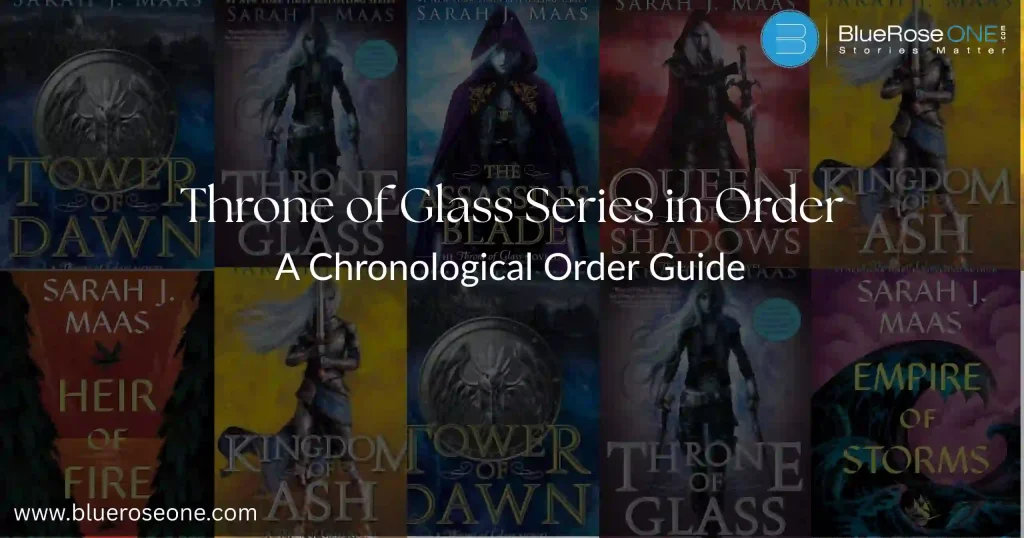
Throne of Glass Series in Order: The Right Order to Read
Ever stood in front of your bookshelf (or screen) asking, “Where do I start with the Throne of Glass series?” You’re not alone. Sarah J. Maas crafted a beautifully tangled fantasy world with fierce characters, deadly assassins, and mind-blowing plot twists but the reading order? Yeah, it’s a little tricky. That’s where this guide comes in. We’re breaking down the chronological order of the Throne of Glass books, so you know exactly where to begin and what to expect. Why You Need a Reading Guide There are two ways to read this series: the way Sarah J. Maas published them and the timeline order in which the events actually unfold. And yes, they’re different! While the publication order gives you the story as readers originally experienced it, the chronological path gives you deeper emotional context. Overview of the Throne of Glass Series About Sarah J. Maas Sarah J. Maas is a powerhouse in YA and New Adult fantasy. She began writing Throne of Glass when she was just 16 and turned it into a global phenomenon. Series Genre and Themes Think assassins, rebellion, hidden royalty, ancient magic, and a heroine who refuses to be tamed. This series blends fantasy, romance, action, and mystery in all the best ways. Main Characters Celaena Sardothien / Aelin Galathynius – Assassin, princess, fire-wielder. Chaol Westfall – Loyal Captain of the Guard with a complex arc. Dorian Havilliard – Prince turned magic-user. Rowan Whitethorn – Fae warrior with an icy attitude and deep loyalty. Manon Blackbeak – Ironteeth witch, unforgettable and fierce. You may also like: Shatter Me Series in Order: Complete Reading Guide (2025 Update) Throne of Glass Books in Chronological Order Let’s break down the chronological reading order with short summaries and reasons why they fall where they do: 1. The Assassin’s Blade (Prequel Novellas) The Assassin’s Blade is a prequel to the Throne of Glass series, compiling five novellas that delve into Celaena Sardothien’s life before her imprisonment. These stories explore her missions as Adarlan’s most feared assassin, her complex relationship with mentor Arobynn Hamel, and her tragic romance with Sam Cortland. Rich in backstory, The Assassin’s Blade provides essential context for Celaena’s motivations and sets the emotional groundwork for the events in Throne of Glass. Why Start Here: It’s the foundation. Knowing what Celaena went through before we meet her in Throne of Glass adds depth and heartbreak. 2. Throne of Glass Sarah J. Maas’s famous YA fantasy novel, Throne of Glass, introduces readers to Celaena Sardothien, a brilliant assassin with a mysterious past. The story is set in the corrupt country of Adarlan, and it chronicles her trip from prison to the palace, where she competes to become the King’s Champion. Throne of Glass, which combines magic, romance, and political intrigue, foreshadows a deeply interwoven trilogy filled with danger and destiny. You may also like: 100 Words to Describe Music: From Classical to Rock and Beyond 3. Crown of Midnight Crown of Midnight is the gripping second installment in Sarah J. Maas’s Throne of Glass series. It follows Celaena Sardothien, now the King’s Champion, as she navigates deadly court politics and uncovers shocking secrets within the glass castle. With higher stakes, darker twists, and deepening relationships, Crown of Midnight expands the world’s lore while revealing Celaena’s hidden past and true identity, setting the stage for the epic transformation that drives the series forward. 4. Heir of Fire Heir of Fire marks a pivotal turn in the Throne of Glass series, expanding the world beyond Adarlan and delving deeper into Aelin Galathynius’s identity and powers. Sent to Wendlyn, Aelin begins rigorous training with the fae warrior Rowan Whitethorn, unlocking her magical potential and confronting her traumatic past. Meanwhile, new characters like Manon Blackbeak and the Ironteeth witches are introduced, setting the stage for larger conflicts and darker revelations. 5. Queen of Shadows Queen of Shadows marks a turning point in the Throne of Glass series, as Celaena Sardothien fully embraces her identity as Aelin Galathynius, Queen of Terrasen. Set after Heir of Fire, the book follows Aelin’s return to Rifthold to confront old enemies, rescue allies, and reclaim her throne. With high-stakes action, deepening relationships, and political intrigue, Queen of Shadows sets the stage for the upcoming war and solidifies Aelin as a true queen and leader. You may also like: 100+ Adjectives Begin with N (With Meanings & Examples) 6. Empire of Storms Empire of Storms is the fifth book in Sarah J. Maas’s Throne of Glass series and marks a turning point in Aelin Galathynius’s journey. Packed with political intrigue, fierce battles, and emotional twists, it follows Aelin as she forges alliances and prepares for war against Erawan. This installment expands the world significantly, intertwining multiple character arcs and setting the stage for an epic showdown, making it a crucial part of the series’ overarching narrative. 7. Tower of Dawn Tower of Dawn is Sarah J. Maas’ sixth volume in the Throne of Glass series, set parallel to the events of Empire of Storms. The plot centers on Chaol Westfall and chronicles his journey to the southern continent of Antica in search of physical and emotional recovery. As Chaol and Nesryn unearth political intrigue and dark secrets, Tower of Dawn advances world-building and lays the basis for the dramatic conclusion of the series. 8. Kingdom of Ash Kingdom of Ash, the epic finale of the Throne of Glass series by Sarah J. Maas, delivers a powerful and emotional conclusion to Aelin Galathynius’s journey. As war erupts across Erilea, Aelin must confront her destiny while battling overwhelming odds. The novel masterfully intertwines the fates of beloved characters, culminating in a thrilling climax filled with sacrifice, redemption, and hope. It’s a must-read conclusion for fans of the series. You may also like: 150 Useful Tone Words to Describe Tone | Explanation with Examples Publication Order of the Series Here’s how the books were originally released: Throne of Glass (2012) Crown of Midnight (2013) The Assassin’s Blade (2014) Heir of Fire (2014) Queen of Shadows…
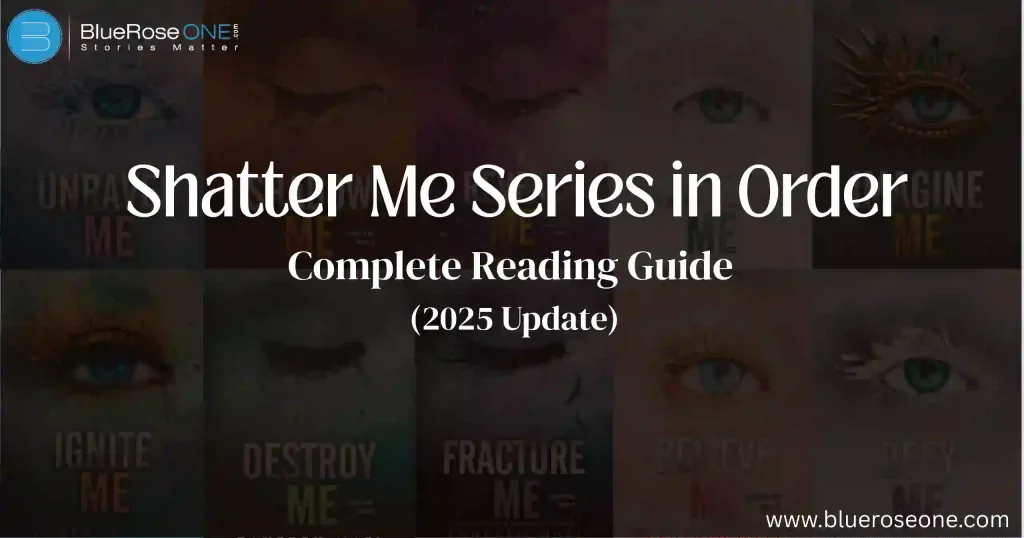
Shatter Me Series in Order: Don’t Read Them Out of Turn!
If you’re looking for a thrilling dystopian series with heart-pounding romance, superhuman abilities, and jaw-dropping plot twists, the “Shatter Me” series by Tahereh Mafi should be at the top of your reading list. But with novellas interspersed between full-length novels, many readers wonder what is the correct order to read the Shatter Me series in 2025? In this updated guide, we break down the entire series in chronological and publication order so you never miss a single detail. What is the “Shatter Me” Series About? The Shatter Me series centers around Juliette Ferrars, a teenage girl whose touch is lethal. Imprisoned for murder, she’s viewed as a threat but soon, the Reestablishment sees her as a weapon. What follows is an explosive journey of identity, power, rebellion, love, and survival in a dystopian future where freedom is a luxury. The series blends dystopian fiction, romantic tension, and science fiction elements, making it a must-read for fans of The Hunger Games, Divergent, and Red Queen. You may also like: 100 Words to Describe Music: From Classical to Rock and Beyond Shatter Me Series in Order – Chronological Reading Guide (2025) To get the most out of character development and the expanding plot arcs, it’s best to follow the chronological order. Here’s the complete Shatter Me reading guide in order: Shatter Me Series Novella 1. Destroy Me (Novella #1) Destroy Me is a novella set between Shatter Me and Unravel Me that delves further into Warner’s POV. It delves into his personal conflicts, motivations, and infatuation with Juliette, presenting a more complex, vulnerable side of him. This part is critical to understanding Warner’s character evolution and lays the emotional framework for the series’ changing dynamics. POV: Warner Takes place: Between Shatter Me and Unravel Me Why it matters: Gives deep insight into Warner’s motivations and introduces key themes for the sequel. You may also like: How to Publish My Book | Self Publish Your Book | BlueRoseOne Destroy Me – Shatter Me Series 2. Fracture Me (Novella #2) Fracture Me is a novella in the Shatter Me series, set between Unravel Me and Ignite Me. Told from Adam Kent’s perspective, it offers a deeper look into his emotional turmoil and priorities during the Omega Point assault. This short but impactful installment provides crucial insights into Adam’s shifting relationship with Juliette and sets the stage for the emotional conflicts ahead. POV: Adam Takes place: During the climax of Unravel Me Why it matters: Offers an alternate perspective on key events and helps explore Adam’s psyche and choices. You may also like: Tone vs Mood Explained: What’s the Real Difference? Fracture Me – Shatter Me Series 3. Shadow Me (Novella #3) Shadow Me is a novella in the Shatter Me series by Tahereh Mafi, set between Restore Me and Defy Me. Told from Kenji Kishimoto’s perspective, it offers a deeper look into his emotions and backstory while the world around him unravels. This installment provides key insight into Kenji’s character, adding emotional depth and bridging the gap between the main novels. POV: Kenji Takes place: During the events of Restore Me Why it matters: Kenji’s humor and emotional depth are spotlighted, expanding the narrative beyond Juliette’s view. You may also read: 150 Useful Tone Words to Describe Tone | Explanation with Examples Shadow Me – Shatter Me Series 4. Reveal Me (Novella #4) Reveal Me is a novella in the Shatter Me series, set between Defy Me and Imagine Me. It focuses on Kenji Kishimoto, offering a deeper look into his thoughts, emotional struggles, and unspoken feelings particularly his growing bond with Nazeera. This short installment adds depth to Kenji’s character while enriching the series’ overarching narrative and emotional stakes. POV: Kenji Takes place: Immediately after Defy Me Why it matters: Sets up major themes and character arcs for the final book. You may also like: All Colleen Hoover Books in Order Listed by Series & Date Reveal Me – Shatter Me Series 5. Believe Me (Novella #5) Believe Me is a novella that follows Imagine Me and functions as an extended epilogue to the Shatter Me trilogy. It focuses on Juliette and Warner’s relationship and explores their problems with love, leadership, and healing in a postwar world. Tahereh Mafi uses this emotional, sentimental addendum to bring closure for the series’ longtime admirers. POVs: Warner and Juliette Takes place: After Imagine Me Why it matters: Provides closure, romance, and answers to lingering questions after the final battle. You may also like: HEA Meaning in Books, Texts, and Pop Culture Explained Believe Me – Shatter Me Series Shatter Me Series Core Novel 1. Shatter Me Shatter Me is the first novel in Tahereh Mafi’s bestselling dystopian YA series. It introduces Juliette Ferrars, a girl with a lethal touch, imprisoned by a totalitarian regime called The Reestablishment. As she struggles with isolation and fear, Juliette discovers her power might be her greatest weapon. The book blends romance, rebellion, and poetic prose to kickstart the thrilling saga. Shatter Me – Shatter Me Series 2. Unravel Me Unravel Me is the intense second installment in Tahereh Mafi’s Shatter Me series. As Juliette grapples with her deadly powers and shifting loyalties, new truths about Warner and the Reestablishment come to light. The novel deepens the love triangle while exploring emotional trauma, freedom, and identity, setting the stage for even greater conflicts in the rebellion ahead. Unravel Me – Shatter Me Series 3. Ignite Me A significant turning point in Juliette’s path is marked by Tahereh Mafi’s third novel in the Shatter Me series, Ignite Me. After Unravel Me’s mayhem, Juliette emerges from her near-death experience with newfound vigor and resolve. She completely accepts her abilities and assumes a leadership role as alliances change and love triangles get more intense. The novel delves into issues of identity, choice, and empowerment, laying the groundwork for the series’ explosive continuation. You may also like: 100+ Adjectives Begin with N (With Meanings & Examples) Ignite Me – Shatter Me Series 4. Restore Me Restore Me (2018) is the fourth…
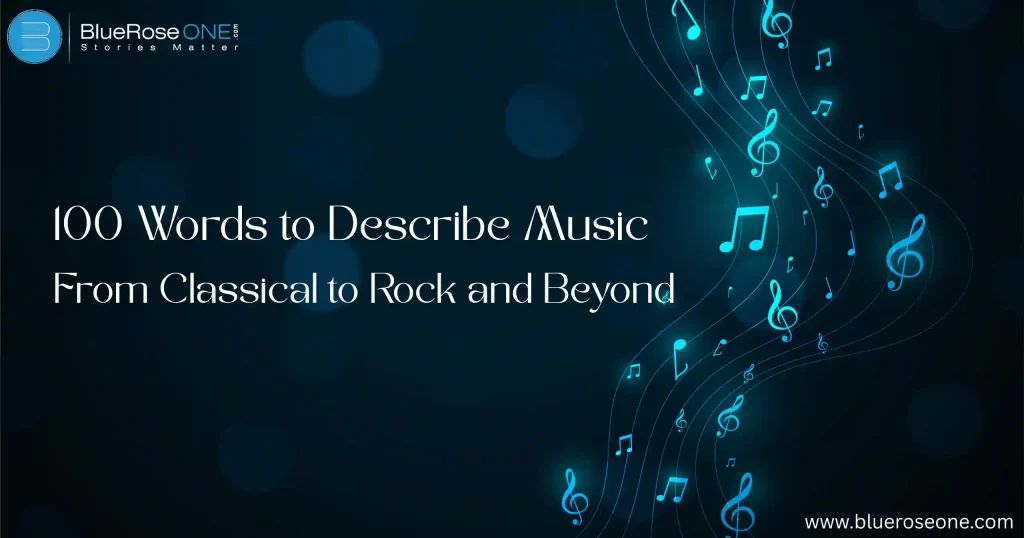
100 Words to Describe Music: From Classical to Rock and Beyond
Why Describing Music Matters Have you ever listened to a song that gave you chills but struggled to describe why? Music is a universal language, but finding the right words to talk about it can be tricky. Whether you’re writing a review, crafting lyrics, or just trying to tell a friend about a great track, having a solid vocabulary helps you convey the magic of music. Music Genres Covered In this guide, we’re diving deep into over 100 descriptive words tailored to different genres from the elegance of classical music to the raw energy of rock and the vibes of EDM. Let’s break it all down. You may also like: 150 Useful Tone Words to Describe Tone | Explanation with Examples Words to Describe Music in General Describing Mood and Emotion Soulful Melancholic Uplifting Haunting Passionate Euphoric Intense Serene Dramatic Nostalgic Words for Rhythm and Tempo Syncopated Pulsing Fast-paced Lively Driving Slow Bouncy Staccato Groovy Flowing Tone, Texture, and Dynamics Rich Crisp Full-bodied Layered Ethereal Raw Smooth Mellow Bright Resonant Words to Describe Classical Music Adjectives for Elegance and Complexity Majestic Intricate Refined Baroque Graceful Harmonious Symphonic Structured Delicate Grand Describing Instruments and Structure Orchestral Melodic Polyphonic Chambered Instrumental Crescendoing Counterpoint Legato Sonata-like Arpeggiated Words to Describe Rock Music High-Energy Descriptions Explosive Gritty Raucous Thunderous Driving Electric Raw Loud Fierce Head-banging Gritty and Powerful Vocabulary Distorted Hard-hitting Shredding Intense Anthemic Rebel-like Edgy Aggressive Jam-packed Fiery Words to Describe Jazz Music Smooth and Improvisational Terms Improvised Swinging Cool Sultry Breezy Laid-back Jazzy Syncopated Loungey Unpredictable Emotional and Free-Form Adjectives Introspective Sensual Fluid Expressive Sophisticated Mellow Blue-toned Intimate Dynamic Vibrant Words to Describe Pop Music Catchy, Upbeat, and Mainstream Vocabulary Catchy Bubbly Danceable Radio-friendly Energetic Polished Glitzy Repetitive (in a good way) Peppy Singable Modern and Trendy Descriptions Trendsetting Viral Sleek Chart-topping Glossy Youthful Flashy Hook-laden Minimalist Punchy Words to Describe Hip-Hop and Rap Rhythmic, Lyrical, and Urban Terms Rhythmic Wordplay-rich Flow-heavy Beat-driven Urban Poetic Streetwise Bass-heavy Punchlined Raw Bold, Confident Descriptors Aggressive Confident Brash Gritty Bold Assertive Fearless Provocative Clever Real Words to Describe Country Music Rustic, Heartfelt, and Storytelling Vocabulary Rustic Down-to-earth Wholesome Heartfelt Narrative Emotional Homey Lyrical Acoustic Honest You may also like: HEA Meaning in Books, Texts, and Pop Culture Explained Words to Describe Electronic and EDM Music Energetic and Synth-Driven Descriptions Hypnotic Thumping Futuristic Pulsating Synthy Glitchy Robotic Bass-dropping Layered Euphoric Club and Festival Vibes Club-ready Festival-banger Rave-worthy Trance-inducing Atmospheric Beat-heavy Loop-driven Electrifying High-octane Uplifting Words to Describe R&B and Soul Smooth, Passionate, and Emotional Words Smooth Sultry Romantic Groove-filled Lush Heartfelt Sensual Velvety Dreamy Deep Words to Describe Folk and Indie Music Authentic, Acoustic, and Introspective Terms Acoustic Lo-fi Raw Honest Quirky Reflective Whimsical Indie-spirited Minimal Organic You may also like: 100+ Adjectives Begin with N (With Meanings & Examples) Tips for Using These Words in Writing Music Reviews When writing music reviews, using the right descriptive words is essential to convey the mood, genre, and emotional impact of a song or album. Words like “haunting,” “melodic,” or “explosive” help readers visualize and feel the music, even if they haven’t heard it. A well-crafted review blends technical details with vivid language to offer a balanced critique. Whether reviewing a classical symphony or a rock anthem, choosing precise words adds clarity and flair. It also helps connect with readers who share your musical taste, making your reviews more engaging, informative, and memorable. Lyrics and Creative Writing Lyrics are a highly effective style of creative writing that combines rhythm, passion, and storytelling. When writing about music, particularly lyrics, descriptive words help to portray the mood, tone, and meaning of the song. Use descriptive adjectives to explain how the songs make you feel or what they are saying whether they are poetic, raw, soulful, or rebellious. Analyzing lyrics can also serve as inspiration for character development, topics, and conversation when writing. Using expressive language to interpret or explain songs allows writers to add depth to their work and connect more profoundly with readers or listeners through shared musical experiences. You may also like: The Housemaid Series in Order: A Complete Reading Guide Marketing and Promotion When writing about music, employing the appropriate descriptive phrases can greatly improve your marketing and promotional efforts. Powerful, vivid language captures the spirit of a song, album, or artist, making the content more enticing to your intended audience. Whether writing social media posts, press releases, or music reviews, employing expressive language may elicit emotions and leave a lasting impact. For example, labeling a music as “soul-stirring” or “electrifying” can elicit greater interest than generic words. Strategic word choice not only demonstrates your writing abilities, but it also contributes to a closer connection with fans and potential listeners. You may also like: 150 Useful Tone Words to Describe Tone | Explanation with Examples Conclusion Music speaks to the soul, and now you can speak back. Whether you’re vibing with classic rock, dancing to EDM, or shedding a tear to your soul, the right words help capture every note, every beat, every feeling. Keep this list handy, experiment with different adjectives, and you’ll be describing music like a pro in no time. Frequently Asked Questions 1. What are some unique words to describe music? Words like “polyphonic,” “ethereal,” and “glitchy” add unique flair when describing different musical styles. 2. How can I describe music without using clichés? Avoid overused terms like “amazing” or “cool.” Instead, focus on emotions, textures, and rhythms that the music evokes. 3. Can I use these words in songwriting? Absolutely! These words can inspire lyrics, set a mood, or add vividness to your song’s imagery. 4. What words best describe emotional music? Try words like “soulful,” “haunting,” “melancholic,” “intimate,” and “expressive” for emotionally charged music. 5. How do critics describe music professionally? They blend technical terms (e.g., “crescendo,” “syncopated”) with emotive language (e.g., “moody,” “energizing”) to give a complete picture.
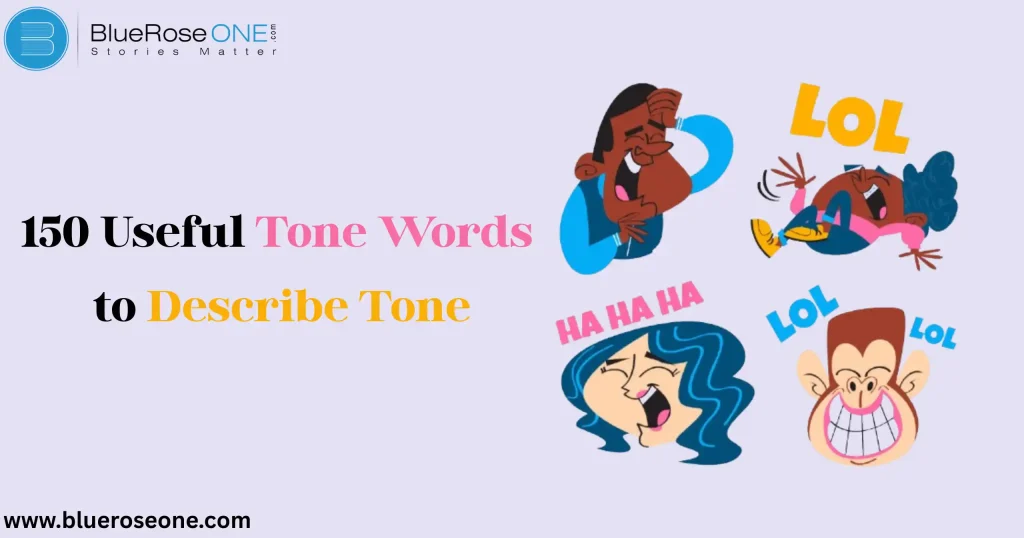
150 Useful Tone Words to Describe Tone | Explanation with Examples
What is Tone in Writing? Tone in writing is the author’s attitude or emotional stance toward the subject and audience. It’s not what you say, but how you say it. Whether you’re writing a blog, novel, essay, or even a tweet tone speaks louder than words. In this article we will discuss such tone words that will help you describe different tones. Why Tone Words Matter Think of tone words like spices in cooking. They don’t change the main ingredient, but they flavor it dramatically. A sarcastic tone vs. a hopeful one can change the entire meaning of a sentence. For example: “Oh, great, another Monday.” (Sarcastic) “Oh, great! Another Monday!” (Genuinely excited) Huge difference, right? You may also like: 100+ Adjectives Begin with N (With Meanings & Examples) Understanding Tone in Literature and Communication How Tone Influences Meaning Tone shapes how a message is received by adding emotional depth and perspective. In literature, tone reveals a writer’s attitude whether humorous, serious, or sarcastic, shifting how readers interpret characters or themes. In communication, it affects clarity and intent, influencing relationships and reactions. Even the same words can convey entirely different meanings when spoken in varied tones. Difference Between Tone and Mood Tone refers to the author’s attitude toward the subject or audience. Mood is the emotional effect the text creates in the reader. Tone is expressed through word choice and style. Mood is shaped by setting, theme, and diction. Understanding both enhances interpretation and communication. Examples of Tone in Everyday Writing Email to a boss: “I hope this message finds you well.” (Professional, Polite) Text to a friend: “Yo, what’s up!” (Casual, Friendly) Complaint letter: “I am deeply dissatisfied.” (Formal, Assertive) You may also like: HEA Meaning in Books, Texts, and Pop Culture Explained Categories of Tone Words Positive Tone Words Warm & Friendly Affectionate Cheerful Grateful Sympathetic Encouraging & Optimistic Hopeful Uplifting Supportive Confident Encouraging & Optimistic Angry & Hostile Bitter Furious Aggressive Contemptuous Pessimistic & Hopeless Cynical Gloomy Depressed Desperate Neutral or Objective Tone Words Formal & Informative Academic Professional Impersonal Objective Detached & Unemotional Distant Cold Reserved Neutral Funny & Witty Tone Words Humorous Playful Quirky Lighthearted Sarcastic or Ironic Tone Words Mocking Sardonic Satirical Snarky Sad & Melancholic Tone Words Regretful Nostalgic Mournful Sorrowful Romantic & Sentimental Tone Words Tender Passionate Dreamy Intimate Professional & Assertive Words Direct Diplomatic Persuasive Respectful You may also like: Top 10 Arundhati Roy Books You Must Read in 2025 150 Common Tone Words with Explanation and Examples Words 1–30: Positive Tone Words Word Meaning Example Sentence Joyful Full of happiness “She had a joyful expression on her face.” Encouraging Giving support or confidence “His words were incredibly encouraging.” Affectionate Showing fondness “He gave her an affectionate smile.” Hopeful Feeling or inspiring hope “We remain hopeful about the outcome.” Supportive Providing emotional help “Her tone was very supportive.” Sincere Genuine and honest “I gave a sincere apology.” Appreciative Expressing gratitude “He sounded appreciative of the effort.” Cheerful Happy and optimistic “Her cheerful voice lifted my spirits.” Words 31–60: Negative Tone Words Word Meaning Example Sentence Sarcastic Mocking in a bitter way “Oh sure, like that’s going to work.” Angry Feeling or showing strong displeasure “His voice was angry and sharp.” Condescending Talking down to someone “Don’t use that condescending tone with me.” Words 61–90: Neutral Tone Words Word Meaning Example Sentence Informative Providing information “This guide is purely informative.” Objective Unbiased and factual “Her tone remained objective throughout.” Formal Respectful and professional “He maintained a formal tone in the email.” Words 91–120: Funny, Ironic, Sarcastic Word Meaning Example Sentence Witty Clever and humorous “His witty remarks made the class fun.” Snarky Rudely mocking “She gave a snarky reply.” Ironic Contrary to what’s expected “That’s ironically the best part.” Words 121–150: Romantic, Assertive, Miscellaneous Word Meaning Example Sentence Romantic Expressing love “His tone was soft and romantic.” Passionate Showing strong emotion “She spoke in a passionate voice.” Assertive Confident and forceful “Be more assertive in your response.” How to Identify Tone in a Text Key Clues to Look For Word choice (diction) Sentence structure Punctuation (!!! or …) Figurative language You may also like: 150 Words That Start with K to Level Up Your Vocabulary Common Mistakes in Tone Interpretation Misreading sarcasm as sincerity Confusing tone with mood Assuming tone is constant throughout the text How to Use Tone Words in Your Own Writing Adjusting Tone to Match Your Purpose Are you writing a complaint? Be formal.Are you sending a love note? Be romantic.Writing an Instagram caption? Be playful. Tips for Writers and Students Read your writing out loud Imagine your reader’s reaction Don’t overuse extreme tone words Be consistent with tone across paragraphs You may also like: 100+ Adjectives Begin with I (With Definitions & Examples) Conclusion Tone words are the unsung heroes of great writing. They help you add personality, emotion, and clarity. Whether you want to motivate, criticize, entertain, or inform there’s a tone for that. Mastering tone words will not only upgrade your writing but also help you better understand others. So go ahead, explore the tone spectrum and make your words count. Frequently Asked Questions 1. What are tone words? Tone words describe the author’s attitude toward the subject or reader, such as cheerful, sarcastic, or formal. 2. How can tone words improve writing? They make your message more expressive, clear, and impactful—helping you connect better with your reader. 3. What’s the difference between tone and mood? Tone is the author’s attitude; mood is what the reader feels. They’re closely related but not the same. 4. Can one sentence have multiple tones? Yes, especially if it includes contrast, irony, or dual meaning. Context matters. 5. Are tone words important in professional communication? Absolutely! They help set the right atmosphere—whether you’re negotiating, emailing, or presenting.
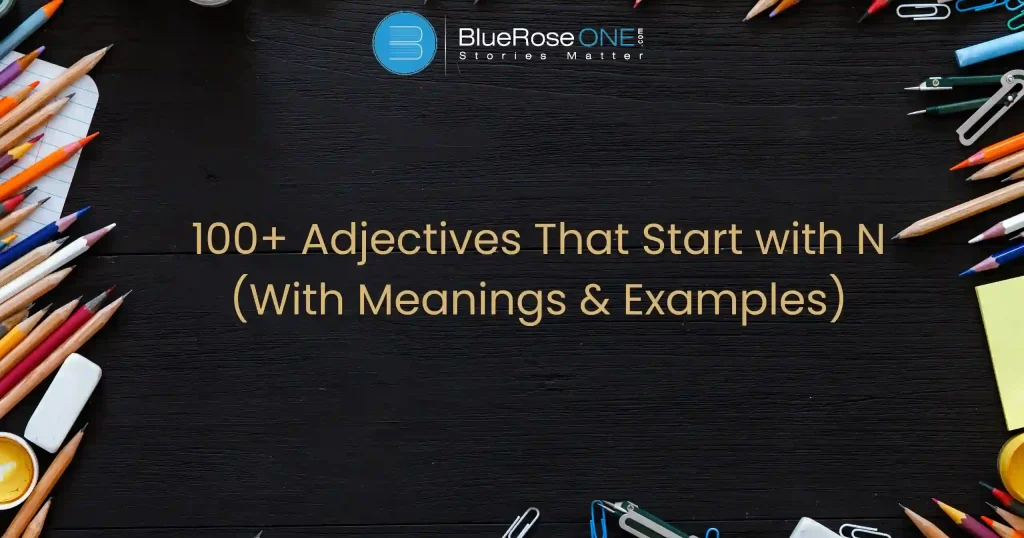
100+ Adjectives Begin with N (With Meanings & Examples)
Want to sound noteworthy, nimble, or noble in your writing? Adjectives that start with the letter N are often overlooked but they’re incredibly powerful when it comes to expressing personality, describing feelings, and making your language pop. Whether you’re a student, writer, or just a curious word nerd, this guide is here to supercharge your vocabulary. Why Learn Adjectives That Start with N? Enhances Vocabulary Power Learning adjectives that start with the letter N significantly enhances your vocabulary power by expanding the range of words you can use to describe people, emotions, situations, and objects more precisely. Words like nurturing, notable, and negligent add depth and clarity to your communication, whether in writing or conversation. A richer vocabulary helps you express yourself more effectively, avoid repetition, and create a lasting impression. Mastering such adjectives not only boosts language skills but also improves reading comprehension and creative expression. Useful in Creative Writing and Communication Learning adjectives that start with “N” can greatly enhance your creative writing and communication skills. Words like notable, nuanced, and noble add specificity, tone, and depth to your expression. Whether you’re crafting vivid character descriptions, setting a mood, or refining persuasive messages, these adjectives help convey your ideas more clearly and imaginatively. They enrich your vocabulary, making your writing more engaging and impactful. In conversation, such descriptive words allow you to express thoughts with greater precision and creativity. You may also like: 100+ Adjectives Begin with I (With Definitions & Examples) What Are Adjectives? (Quick Refresher) Adjectives are describing words. They tell us more about nouns—things, places, people, or ideas. For example: The noisy child wouldn’t stop talking. She wore a navy blue dress. List of 100+ Adjectives That Start with N Let’s dive into our massive list! We’ve sorted them by tone and usage. Positive Adjectives Starting with N Adjective Meaning Example Noble Having high moral principles He acted with a noble heart. Neat Tidy and organized Her desk was always neat. Nurturing Caring and encouraging growth She’s a nurturing mother. Nice Pleasant and kind He’s a nice guy. Noteworthy Worthy of attention Her achievements are noteworthy. Nimble Quick and light in movement The dancer was nimble on her feet. Nifty Clever or stylish That’s a nifty trick! Natural Genuine or unforced She has a natural charm. Nonchalant Calm and relaxed He walked in with a nonchalant smile. Nonjudgmental Accepting of others She’s incredibly nonjudgmental. Negative Adjectives Starting with N Adjective Meaning Example Nasty Mean or unpleasant That was a nasty comment. Narcissistic Self-centered He’s a narcissistic boss. Nefarious Wicked or criminal The villain’s plan was nefarious. Nosy Too interested in others’ affairs My neighbor is nosy. Neglectful Failing to care properly He was neglectful of his duties. Naive Lacking experience Don’t be so naive. Nervy Bold in a rude way That was a nervy remark. Noncompliant Not obeying rules The student was noncompliant. Noisy Making a lot of noise The room was noisy and chaotic. Noxious Harmful or toxic The chemicals were noxious Neutral or Descriptive Adjectives Starting with N Adjective Meaning Example Narrow Not wide The narrow alley was dark. Nasal Related to the nose He had a nasal voice. Native Originating from a place She’s a native speaker. Nominal In name only It’s a nominal fee. Numerous Many There were numerous reasons. Nutritional Related to nutrition Check the nutritional facts. Numeric Consisting of numbers Enter the numeric code. Nightly Happening every night The nightly news was on. Neutral Not favoring a side Stay neutral in the debate. Northwest Direction-based Head toward the northwest corner. Rare and Unique Adjectives Starting with N Want to sound impressive? Try these gems: Adjective Meaning Example Nocturnal Active at night Owls are nocturnal birds. Natty Neatly dressed He wore a natty suit. Numinous Mysterious or spiritual A numinous atmosphere filled the temple. Nacred Pearly or shiny Her necklace had a nacred glow. Adjectives Starting with N to Describe a Person Whether you’re describing someone’s behavior or character, here are some great picks: Noble – She’s a noble soul. Naive – He’s too naive to see the truth. Nurturing – A nurturing leader builds better teams. Nervous – I was nervous before the test. Nosy – That nosy neighbor again! You may also like: 200 Demon Names from Mythology, Folklore & Fiction (A to Z) You may also like: 20 Satire Examples in Real-World Every Writer Should Know Adjectives Starting with N to Describe Emotions or Feelings Whether you’re describing someone’s behavior or character, here are some great picks: Noble – She’s a noble soul. Naive – He’s too naive to see the truth. Nurturing – A nurturing leader builds better teams. Nervous – I was nervous before the test. Nosy – That nosy neighbor again! Adjectives Starting with N for Kids Make vocabulary fun for little learners: Nice Neat Naughty Noisy Nifty Use games, rhymes, or flashcards to help them learn easily! You may also like: Top 10 Arundhati Roy Books You Must Read in 2025 How to Practice Using N-Adjectives in Everyday Life Try this mini challenge: Use at least 3 new adjectives starting with N in your conversations every day for a week. Example: “That’s a nifty idea!” “He seems quite noble.” “She’s always so neat.” Mistakes to Avoid When Using Adjectives Overusing simple words like “nice” or “nasty.” Using negative adjectives to describe people casually—like “nosy” or “naive”—which can come off rude. Not knowing the meaning—don’t just use it because it sounds smart! You may also like: 150 Useful Tone Words to Describe Tone | Explanation with Examples Conclusion There you have 100+ adjectives that start with N to supercharge your vocabulary. Whether you’re writing an essay, sending a thoughtful message, or just want to sound more articulate, these words are your new best friends. Practice them daily, have fun with them, and soon, your vocabulary will be nothing short of noteworthy! You may also read: 150 Words That Start with K to Level Up Your Vocabulary Frequently Asked Questions 1. What is the most positive adjective starting with N?…
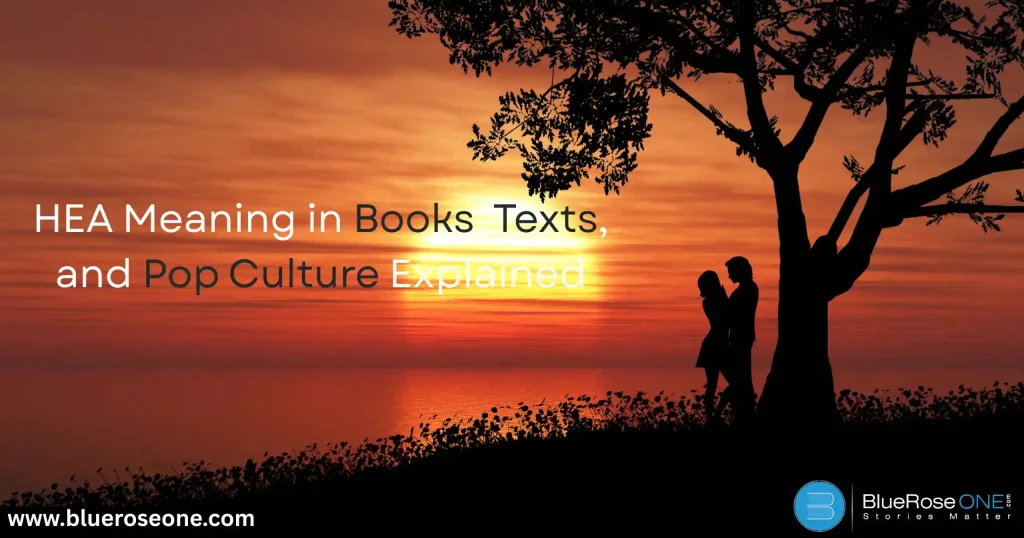
HEA Meaning in Books, Texts, and Pop Culture Explained
HEA Meaning HEA stands for “Happily Ever After.” You’ve probably seen it at the end of a fairy tale or a romance novel. It’s that satisfying moment where the couple kisses, the music swells, and the curtain falls everything wraps up with a bow. But in modern storytelling, HEA has become more than just a cliché. It’s a genre-defining concept, especially in romance. HEA vs. HFN – What’s the Difference? If HEA is the fairy-tale castle, HFN (Happy For Now) is more like a comfy Airbnb. It’s cozy, promising, but not guaranteed forever. Romance purists often distinguish the two HEA means marriage, babies, and riding off into the sunset, while HFN just gives characters a break from the chaos. Both are valid, but HEA has that timeless appeal. The Origins of HEA in Literature Fairy Tales and Classic Romance The concept of “happily ever after” (HEA) finds its roots in fairy tales and classic romance literature, where love conquers all and justice prevails. Stories like Cinderella, Sleeping Beauty, and Beauty and the Beast cemented the HEA formula, offering readers emotional closure and moral reassurance. These tales shaped cultural expectations of romance, portraying enduring love as the ultimate reward for virtue and perseverance. HEA became synonymous with emotional fulfillment, influencing countless genres from historical romance to modern fiction. The Influence of the Romance Genre The romance genre has played a pivotal role in shaping the modern concept of HEA “happily ever after.” Rooted in fairy tales and classic love stories, romance literature consistently emphasizes emotional fulfillment and resolution, where protagonists overcome obstacles to find lasting love. This genre’s popularity, especially since the 18th and 19th centuries, has reinforced the cultural expectation that love stories should end on a hopeful note, embedding HEA as a core narrative element in both literature and pop culture. HEA in Texting and Online Chats How HEA is Used in Digital Conversations In digital communications, the term HEA (short for Happily Ever After) is frequently used to signify emotional closure or naive optimism. HEA, which is commonly used in talks among fans of romance literature, movies, or series, expresses the wish or confirmation that a story finishes on a happy, fulfilling note. It’s also used casually in texting to joke about desirable life outcomes or to celebrate a particular victory for example, saying, “Got the job! “HEA moment!” infusing cheerful hope into ordinary interactions. Examples of HEA in Context It’s shorthand for emotional investment and payoff. HEA in Pop Culture and Media Romantic Movies with Classic HEAs Romantic movies have long celebrated the “happily ever after” (HEA) trope, offering audiences emotional closure and enduring hope. Classics like Pride and Prejudice (2005), The Notebook (2004), and Pretty Woman (1990) epitomize this with couples overcoming obstacles to find lasting love. These films reinforce the cultural desire for idealized romance, where love triumphs against all odds. Their HEAs continue to resonate, shaping viewer expectations and cementing the trope’s place in pop culture storytelling. TV Shows That Delivered the Perfect HEA Several television episodes have expertly provided the ideal Happily Ever After (HEA), leaving fans with emotionally rewarding endings. Parks and Recreation closes with glimpses of each character’s happy future, but Friends concludes with Monica and Chandler starting a family and Ross and Rachel reuniting. The Office provides a poignant conclusion as the characters discover love, purpose, and peace. These programs demonstrate how a well-crafted HEA may have a long-term impact and improve the storytelling experience in pop culture. You may also like: 150 Useful Tone Words to Describe Tone | Explanation with Examples The Psychology Behind HEA The Feel-Good Effect The “Feel-Good Effect” describes the emotional gratification that readers feel when a tale ends with a Happily Ever After (HEA). Psychologically, this is linked to our brain’s reward system: when narratives conclude on a positive note, dopamine levels rise, resulting in a sensation of happiness and closure. HEAs also provide a sense of emotional comfort and regularity, which mitigates the uncertainties of real life. According to scientists, this effect reduces stress and boosts optimism by reinforcing the sense that love, justice, and success are possible. As a result, readers are more likely to feel elevated, soothed, and even hopeful after reading a HEA narrative. Closure and Emotional Satisfaction A Happily Ever After (HEA) ending is appealing mostly because it provides closure and emotional fulfillment. In terms of psychology, HEAs offer a sense of closure that reflects our intense need for security and hope. The adventures of characters evoke strong emotions in readers, and a satisfying ending provides a cathartic release that eases any residual tension or worry. This emotional reward strengthens optimism and may even be used as a means of emotional healing or escape. Essentially, HEAs provide a reassuring assurance that, in spite of obstacles, things will work out. Writing an HEA as an Author Tips to Craft a Meaningful HEA A strong HEA feels authentic, not cheesy. Avoiding Clichés While Ending on a High Note While writing a Happily Ever After (HEA), authors frequently fall into conventional tropes, such as unexpected proposals or last-minute reconciliations, which might feel uninspired. To avoid clichés, allow the characters’ emotional journeys to shape the conclusion naturally. Rather than demanding a cookie-cutter happy ending, prioritize earned resolutions that demonstrate progress, healing, and authenticity. A high note does not have to imply perfection; rather, it should convey hope, satisfaction, and a sense of completion that is consistent with the story’s tone and character arcs. Global Perspectives on HEAs Western vs. Eastern Storytelling Styles Western storytelling frequently stresses individualism, linear plots, and unambiguous resolves, which usually culminate in a “Happily Ever After” (HEA) that celebrates personal or romantic accomplishment. In contrast, Eastern storytelling, particularly in traditions such as Japanese, Chinese, and Indian literature, usually values cyclical storylines, moral ambiguity, and social harmony over personal success. While Western HEAs emphasize closure and reward, Eastern stories may prioritize inner serenity, duty, or balance, occasionally eschewing unambiguous happy endings. These cultural differences influence various conceptions of what…
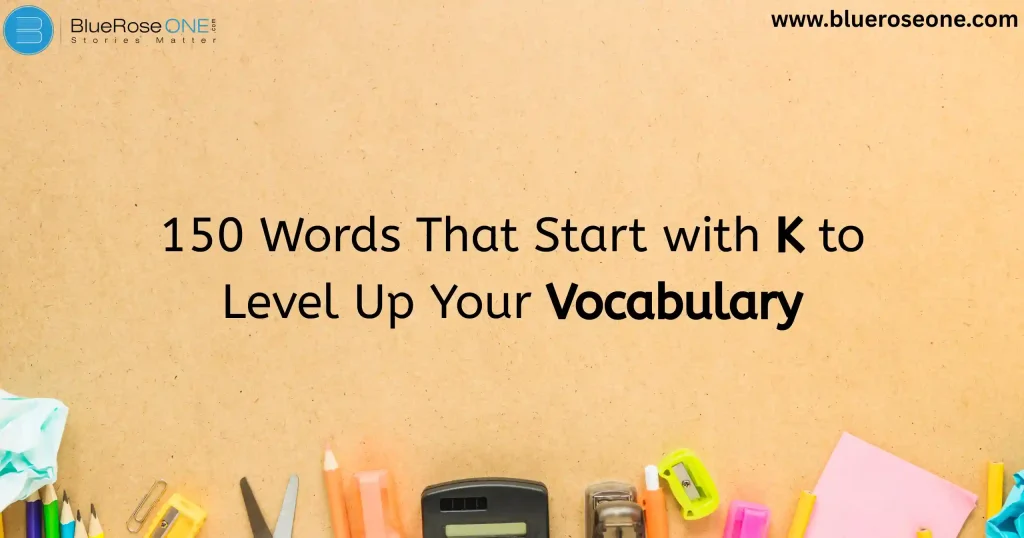
150 Words That Start with K to Level Up Your Vocabulary
Need a quick linguistic kick? The letter K packs far more punch than its quiet, back‑of‑the‑class reputation suggests. Below you’ll find 150 lively, learn‑worthy words each defined in plain English and illustrated with a snappy example sentence so you can sprinkle fresh flair into everyday speech, persuasive copy, or literary prose. A. “Ka‑” Kick‑off (1‑26) Kaboom (interj.)—explosive sound or impact. Example: “With a final kaboom, the fireworks painted the sky crimson.” Kabuki (n.)—classical Japanese dance‑drama noted for stylized makeup. “The troupe performed kabuki for a captivated Tokyo audience.” Kachina (n.)—Hopi spirit being or carved doll. “Each kachina doll tells a sacred origin story.” Kaffeeklatsch (n.)—informal coffee chat. “Our weekly kaffeeklatsch keeps the remote team bonded.” Kafkaesque (adj.)—surreally oppressive or nightmarish. “Filing those forms felt Kafkaesque—rules leading nowhere.” Kale (n.)—leafy green vegetable. “He tossed roasted kale into the grain bowl for crunch.” Kaleidoscope (n.)—tube producing shifting patterns of color. “City lights formed a neon kaleidoscope on the river.” Kaleidoscopic (adj.)—constantly changing; multicolored. “Her kaleidoscopic memories blended joy and sorrow.” Kalimba (n.)—African thumb piano. “A gentle kalimba melody welcomed guests.” Kalon (n.)—ideal of profound beauty and moral goodness. “He pursued kalon, not mere aesthetics, in his art.” Kame (n.)—hilly mound left by retreating glaciers. “Glacial kames dotted the Scottish landscape.” Kamikaze (adj.)—recklessly self‑destructive. “Her kamikaze skiing style thrilled—and terrified—spectators.” Kampong (n.)—Malay village or settlement. “Smoke curled over the riverfront kampong at dawn.” Kanban (n.)—lean manufacturing signal card system. “A digital kanban board tracks our sprint tasks.” Kangaroo (n.)—large Australian marsupial. “A curious kangaroo shadowed our outback jeep.” Kangaroo court (n.)—illegitimate, biased tribunal. “The whistle‑blower feared a kangaroo court, not justice.” Kanji (n.)—logographic Japanese characters of Chinese origin. “She practiced writing complex kanji for ‘love.’” Kantian (adj.)—relating to philosopher Immanuel Kant. “Their ethics debate turned decidedly Kantian.” Karaoke (n.)—sing‑along with entertainment with backing tracks. “Friday’s karaoke night revealed hidden divas.” Karyotype (n.)—chromosome profile of a cell. “The lab ordered a karyotype to confirm the diagnosis.” Karma (n.)—spiritual law of cause and effect. “She trusts good deeds will bring good karma.” Karmic (adj.)—pertaining to karma. “Their reunion felt karmic, as if destined.” Karat (n.)—gold purity measure (24 karat = pure). “The ring dazzled at 18 karat gold.” Karst (n.)—limestone terrain with sinkholes and caves. “South China’s karst spires pierce the mist.” Karate (n.)—Japanese unarmed combat art. “After years of karate, her reflexes were lightning‑quick.” Kart (n.)—small motorized racing vehicle. “We sped around the indoor kart track like pros.” B. “Ke‑” and “Kh‑” Know‑How (27‑49) Kebab (n.)—skewered and grilled meat pieces. “A sizzling lamb kebab perfumed the street.” Keen (adj.)—sharp; eager; perceptive. “Her keen insight spotted the market gap.” Keenness (n.)—eagerness or acuteness. “A scientist’s keenness for detail drives discovery.” Keeper (n.)—guardian; something worth retaining. “That recipe’s a keeper—print it!” Keepsake (n.)—souvenir kept for memory’s sake. “Grandma’s locket is my most cherished keepsake.” Kernel (n.)—core or seed of something. “There’s a kernel of truth in every rumor.” Kerfuffle (n.)—commotion or fuss. “A billing error caused a minor kerfuffle.” Keratin (n.)—protein forming hair and nails. “Conditioners replenish lost keratin after coloring.” Kerchief (n.)—square cloth for the head or neck. “She tied a red kerchief against the dust.” Kerosene (n.)—flammable oil used as fuel. “Lanterns glowed with smoky kerosene light.” Kestrel (n.)—small falcon with hovering flight. “A kestrel hovered, scanning for mice.” Ketchup (n.)—tomato‑based condiment. “He refuses fries without ketchup.” Kevlar (n.)—tough synthetic fiber. “The vest’s Kevlar lining stopped the shard.” Key (n./adj./v.)—crucial, instrument for locks, or to enter data. “Feedback is key to product success.” Keynote (n./v.)—main speech; to set underlying tone. “The CEO will keynote the tech summit.” Keystone (n.)—central supporting element. “Trust is the keystone of any partnership.” Keyboard (n.)—set of keys for typing or playing music. “Sticky keyboard keys slow my writing flow.” Keypad (n.)—small set of numeric or function keys. “Enter your PIN on the payment keypad.” Keyhole (n.)—slit for a key; a narrow view. “Moonlight streamed through the ancient keyhole.” Keyword (n.)—significant search or indexing term. “Choose the right keyword to rank higher.” Khaki (adj./n.)—tan‑colored; sturdy cotton fabric. “He wore classic khaki chinos to the picnic.” Khan (n.)—title for Central Asian ruler; surname. “Genghis Khan forged a vast empire.” Kharif (adj.)—relating to India’s monsoon crop season. “Rice is a dominant kharif crop.” C. “Ki‑” Powerhouse (50‑98) Kibbutz (n.)—collective Israeli farm community. “Volunteers joined a desert kibbutz for harvest.” Kibitz (v.)—chatter or give unsolicited advice. “Spectators love to kibitz at chess parks.” Kibosh (n./v.)—suppress or end abruptly. “Budget cuts put the kibosh on travel plans.” Kick (n./v.)—strike with foot; thrill or burst. “That chili packs a fiery kick.” Kickback (n.)—illicit payment; relaxed posture. “The scandal revealed massive kickbacks.” Kicker (n.)—surprising ending; football scorer. “Here’s the kicker: the thief returned the wallet.” Kickoff (n.)—start of an event. “Our product kickoff meeting sets the roadmap.” Kid (n./v.)—child; to joke. “Don’t kid yourself—practice matters.” Kiddo (n.)—affectionate term for a child. “Time for bed, kiddo.” Kidnap (v.)—seize and carry away illegally. “Detectives foiled the plot to kidnap the heiress.” Kidney (n.)—organ filtering blood. “Healthy kidneys regulate fluid balance.” Kinetic (adj.)—relating to motion. “The sculpture turns wind into kinetic art.” Kinematics (n.)—branch of mechanics describing motion. “Animators study kinematics for realism.” Kinesiology (n.)—science of human movement. “She’s earning a degree in kinesiology.” Kinesthetic (adj.)—learning through physical activity. “Kinesthetic learners grasp math by building models.” King (n.)—male monarch; chess piece. “The king abdicated in favor of democracy.” Kingdom (n.)—realm ruled by a king; a domain. “Fungi form a separate biological kingdom.” Kingly (adj.)—regal; dignified. “He offered a kingly gift of horses.” Kingship (n.)—position or dignity of a king. “Legends explore the burdens of kingship.” Kingmaker (n.)—influencer who selects rulers. “The media mogul became a political kingmaker.” Kingpin (n.)—central figure; bowling pin at center. “Arresting the kingpin crippled the cartel.” Kingsize (adj.)—larger than standard. “They booked a kingsize bed for comfort.” Kink (n./v.)—twist or flaw; pleasurable quirk. “There’s a kink in the hose—water stopped.” Kinky (adj.)—curly; unconventional. “She loves her naturally kinky hair.” Kin (n.)—family or relatives. “He searched for long‑lost kin in Ireland.” Kind (adj./n.)—gentle; type or sort. “A simple kind word can…
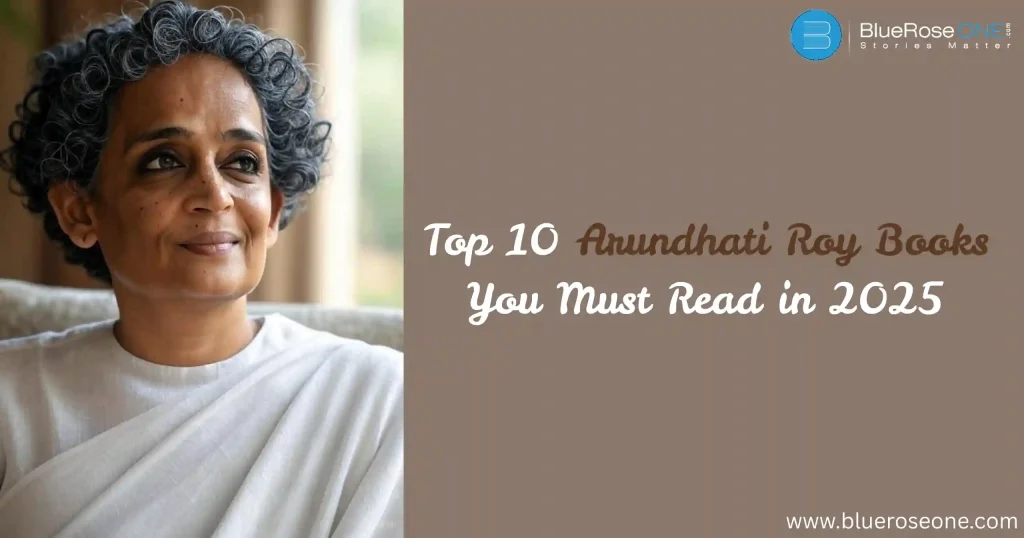
10 Arundhati Roy Books You’ll Regret Missing in 2025
Arundhati Roy is not just an author, she’s a movement. Known for her lyrical prose, unapologetic political voice, and unmatched courage, she has carved her place as one of the most powerful writers and activists of our time.Whether you’re into fiction that grips your soul or essays that challenge your worldview, 2025 is the perfect year to dive into Roy’s influential works. In this article we will explore the top ten arundhati roy books that everyone must read: Why Arundhati Roy Books Still Matter in 2025 Roy’s writing doesn’t exist in a vacuum. She gives voice to those forgotten in mainstream discourse Dalits, Kashmiris, Adivasis, and many others. Her work has only grown more relevant as political unrest, environmental degradation, and media manipulation continue to dominate global headlines. What makes Roy so unique is her seamless blend of storytelling and activism. Her novels are poetic, while her essays are piercing and revolutionary. In 2025, with misinformation at its peak, her honest lens becomes even more vital. You may also like: 150 Useful Tone Words to Describe Tone | Explanation with Examples Here’s a complete list of top ten arundhati roy books of all time 1. The God of Small Things (1997) The God of Small Things (1997) is Arundhati Roy’s Booker Prize-winning debut novel, which earned her international renown. Set in Kerala, the story follows fraternal twins Estha and Rahel as they negotiate a society molded by love, loss, caste, and forbidden relationships. Roy’s lyrical style and non-linear storytelling expose the emotional depth of ordinary tragedies, making this novel a strong and unforgettable read in contemporary Indian literature. You may also like: List of Top 10 Best Rabindranath Tagore Books of All Time The God of Small Things – Arundhati Roy Books 2. The Ministry of Utmost Happiness (2017) Arundhati Roy’s novel The Ministry of Utmost Happiness is a compelling and beautiful look at India’s underprivileged populations. It was published in 2017 and tells multiple stories, with Anjum, a transgender lady, and Tilo, a woman caught up in political instability. Roy expertly weaves personal problems with national disasters, providing a compelling reflection on identity, resistance, and the complexities of modern India. It is a must-read for its emotional depth and beautiful writing. You may also read: 10 Tony Robbins Books That Will Blow Your Mind The Ministry of Utmost Happiness – Arundhati Roy Books 3. Field Notes on Democracy: Listening to Grasshoppers (2009) Field Notes on Democracy: Listening to Grasshoppers is a powerful collection of essays by Arundhati Roy that critically examines the state of democracy in India. Published in 2009, the book explores rising nationalism, communal violence, and media manipulation. Roy draws on real events and sharp analysis to question mainstream narratives, offering a bold voice for marginalized communities. This thought-provoking work remains deeply relevant for readers navigating India’s socio-political landscape in 2025. You may also like: Top Aravind Adiga Books You Must Read Before You Die Field Notes on Democracy – Arundhati Roy Books 4. Capitalism: A Ghost Story (2014) Capitalism: A Ghost Story by Arundhati Roy is a powerful critique of India’s economic and political systems. In this thought-provoking work, Roy explores how corporate power and neoliberal policies have deepened inequality and silenced dissent. Through investigative essays and bold commentary, she exposes the links between capitalism, state violence, and media control. This book is essential reading for anyone seeking to understand the hidden costs of economic growth in modern India. You may also read: Devdutt Pattanaik Book List: Best Mythology Books Ranked Capitalism: A Ghost Story – Arundhati Roy Books 5. Things That Can and Cannot Be Said (2016) Things That Can and Cannot Be Said is a strong political talk between Arundhati Roy and actor-activist John Cusack, featuring revelations from whistleblower Edward Snowden. The book was published in 2016 and delves into subjects such as surveillance, state control, war, and resistance. Roy’s keen assessment of global power structures, along with her fearless voice, make this an engaging and current read, particularly for anyone interested in activism, freedom, and the ethics of dissent. You may also like: The 20 Agatha Christie Books Every Mystery Lover Must Read You may also like: Left Behind Series Books in Order: Where to Begin Things That Can and Cannot Be Said – Arundhati Roy Books 6. Azadi: Freedom. Fascism. Fiction. (2020) Arundhati Roy’s Azadi: Freedom, Fascism, Fiction is a remarkable collection of articles that examines India’s political environment in the face of increasing nationalism. The book, which was published in 2020, examines freedom, dissent, and the role of writers in difficult times. Roy investigates the consequences of the Citizenship Amendment Act, the Kashmir lockdown, and the overall deterioration of democratic norms. Azadi’s powerful commentary invites readers to reconsider justice, identity, and resistance in contemporary India. You may also like: List of Top 10 Nikita Singh Books of All Time Azadi: Freedom. Fascism. Fiction. – Arundhati Roy Books 7. The End of Imagination (1998, republished 2016) The End of Imagination (1998, reissued 2016) is a powerful collection of Arundhati Roy’s early political articles that sharply criticizes nationalism, nuclear policy, and social inequality in India. Roy uses bold, poetic language to question prevailing narratives and give voice to underrepresented communities. This work represents her journey from author to outspoken activist, making it important reading for anybody looking to grasp her changing perspective and uncompromising devotion to the truth. You may also like: Top 10 Ravinder Singh Books You Must Read Now! – #9 Will Blow Your Mind You may also like: 20 Satire Examples in Real-World Every Writer Should Know The End of Imagination – Arundhati Roy Books 8. Listening to Grasshoppers: Field Notes on Democracy (2009) Listening to Grasshoppers: Field Notes on Democracy by Arundhati Roy is a bold collection of political essays that critique the state of democracy in India. Through vivid storytelling and sharp analysis, Roy examines communal violence, inequality, and the erosion of civil liberties. Published in 2009, the book reflects her unwavering commitment to justice and truth, making it essential reading for anyone interested in contemporary Indian…
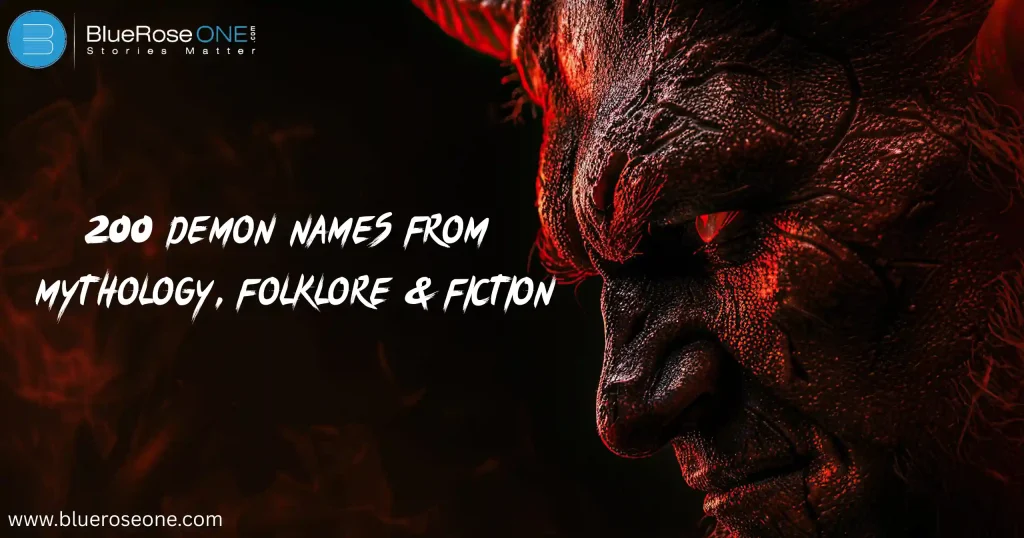
200 Terrifying Demon Names You’ve Never Heard Of!
Ever wondered what lurks behind the veil of myths, scriptures, or horror movies? Demon names have always stirred fascination, fear, and creativity. From ancient scrolls to modern RPGs, these names pop up everywhere. Whether you’re writing fiction, researching folklore, or just curious, this massive A-Z list of 200 demon names will quench your thirst for the arcane. Table of Content What Are Demon Names and Why Do They Matter? Origins in Mythology and Folklore Demon names aren’t just random gibberish from horror tales. Many come from ancient religious texts, pagan traditions, and local legends. Some were once gods, later demonized by rival faiths. For instance: Influence in Modern Fiction and Pop Culture From “The Exorcist” to “Supernatural”, demon names are a staple in fantasy and horror genres. They add mystery, danger, and power to stories. Ever played a game and summoned Paimon or fought Lilith? That’s the power of names. A-Z Demon Names List Let’s take a deep dive into the 200 most intriguing, terrifying, and iconic demon names you’ll ever encounter. Buckle up—this is your infernal dictionary! A-D Demon Names E-H Demon Names I-L Demon Names M-P Demon Names Q-T Demon Names U-Z Demon Names You may also like: The Housemaid Series in Order: A Complete Reading Guide Demon Classifications: Types & Roles Princes of Hell In demonology, the Princes of Hell are powerful rulers who preside over vast legions of demons and hold high-ranking positions in Hell’s hierarchy. Often seen as counterparts to archangels, these infernal princes such as Lucifer, Beelzebub, and Asmodeus embody deadly sins and command immense influence. Each prince is associated with specific domains like lust, pride, or wrath, and their names frequently appear in grimoires and occult texts. They represent the elite class in demonic classifications. Goetic Demons Goetic demons are mentioned in Ars Goetia, the first section of The Lesser Key of Solomon, a 17th-century grimoire. This literature describes 72 demons, each with their own titles, powers, and hierarchies, who frequently rule legions of souls. Summoners believed that by using ritual magic, these creatures could be forced to serve. Goetic demons are commonly referred to as kings, dukes, presidents, and other titles, indicating their hierarchical infernal order and specific functions, such as exposing secrets, imparting wisdom, or controlling emotions. Elemental and Nature Demons Elemental and nature demons are spirits tied to the raw forces of the natural world earth, fire, water, and air. These entities often appear in mythologies as powerful beings capable of controlling storms, shaping terrain, or causing natural disasters. In folklore, they may guard sacred groves or curse those who exploit nature. Unlike purely evil demons, many elemental spirits are neutral or chaotic, acting in accordance with natural balance rather than human morality. You may also like: 150 Useful Tone Words to Describe Tone | Explanation with Examples Should You Use Demon Names? Ethical Consideration Before using demon names in writing or rituals, it’s important to reflect on the ethical implications. Some cultures view these names as sacred, dangerous, or disrespectful to invoke lightly. Writers should be mindful of cultural appropriation and avoid sensationalizing beliefs they don’t fully understand. Using demon names for entertainment, especially from living traditions, can offend followers and perpetuate harmful stereotypes. Ethical storytelling means respecting the origins, meanings, and impact these names carry across different societies. Creative Inspiration vs. Spiritual Risk In books like The Lesser Key of Solomon, demon names are often used to invoke mystery, power, or forbidden knowledge—fueling creativity for authors and artists alike. However, using such names can blur the line between imaginative expression and spiritual risk. Some believe invoking these names, even fictionally, may invite negative energy or unintended consequences. While the allure of the occult is creatively rich, it’s important to approach it with awareness, respect, and clear artistic intention. Conclusion There you have it, a deep, fiery dive into 200 demon names from around the world. From ancient rituals to Hollywood scripts, these names echo with mystery and power. Use them to inspire, intrigue, or terrify but always with respect for the lore they come from.
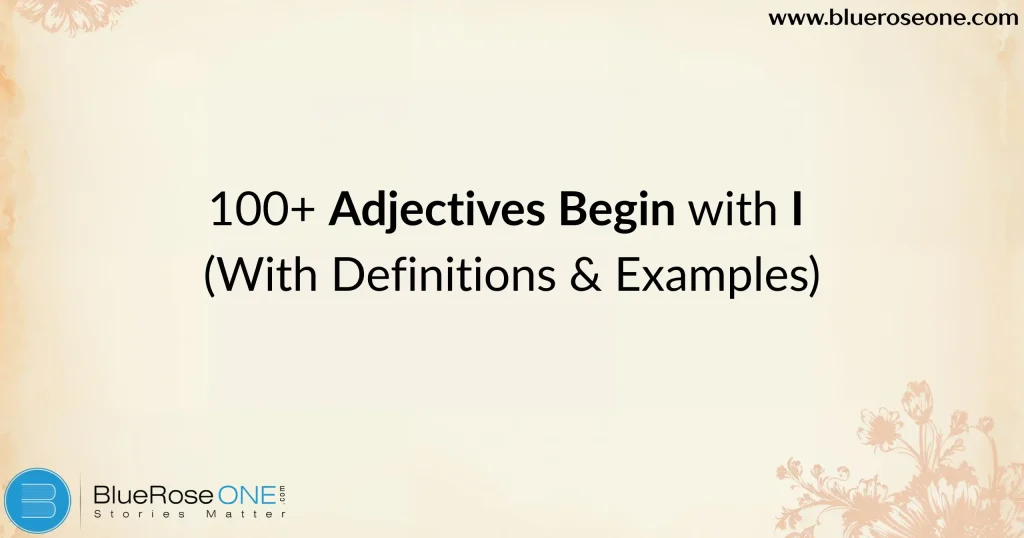
100+ Adjectives Begin with I (With Definitions & Examples)
Table of Content What Are Adjectives? Adjectives are like the seasoning of language; they give nouns their flavor. They help describe people, places, things, or ideas by answering questions like what kind?, which one?, or how many? Why “I” Adjectives Matter in Language You might not think the letter “I” holds much power, but you’d be surprised. “I” adjectives can make your language sound insightful, intense, or even imaginative. Whether you’re a writer, student, or just trying to expand your vocabulary, this list has got you covered. You may also like: 100+ Adjectives That Start with C (With Definitions & Examples) Positive Adjectives Begin with I Inspiring Adjectives These adjectives can uplift, motivate, and leave a good impression. Personality-Boosting Adjectives Negative Adjectives Bgein with I Describing Negative Traits You may also like: Top 100 Words Starts with V to Improve Your English Writing and Speaking Common in Conflict and Critique Descriptive Adjectives for People Some “I” adjectives are tailor-made to describe personalities, traits, or behaviors. Use these to add color to character descriptions in stories, bios, or resumes. You may also like: 150+ Positive Words That Start with O to Brighten Your Vocabulary Descriptive Adjectives for Things or Ideas Whether you’re talking about a concept or a coffee mug, “I” adjectives help! Emotional & Mental State Adjectives These relate to inner thoughts and feelings. Appearance & Physical Traits Adjectives Perfect for describing looks, settings, or moods. You may also like: 100+ Adjectives Begin with N (With Meanings & Examples) Action-Oriented or Dynamic Adjectives Use these for energy, motion, or transformation. Rare & Unusual “I” Adjectives Get ready to impress! You won’t find these in casual conversation, but they sparkle in essays or literature. Academic & Formal “I” Adjectives Great for scholarly or formal writing. Slang and Informal “I” Adjectives These bring flavor to casual speech. Adjectives for Writing & Storytelling Create vivid imagery and emotional depth. More Adjectives Begin with I Adjective Definition Example Sentence Idealistic Guided by ideals She has an idealistic view of the world. Icy Cold or unfriendly His tone was icy during the call. Immaculate Spotlessly clean The room was immaculate. Impeccable Flawless Her manners were impeccable. Incredible Hard to believe He told an incredible story. Indelible Cannot be erased That memory was indelible. Inaccurate Not correct Your data seems inaccurate. Indecisive Not able to decide He’s very indecisive under pressure. Infectious Spread easily Her laughter was infectious. Industrious Hardworking She’s an industrious student. Inexplicable Unexplainable The event was inexplicable. Conclusion So there you have it—over 100 adjectives starting with “I” that can supercharge your vocabulary and writing. From emotional depth to physical descriptions, from formal to funny, these adjectives help you say exactly what you mean, with impact. Frequently Asked Questions
